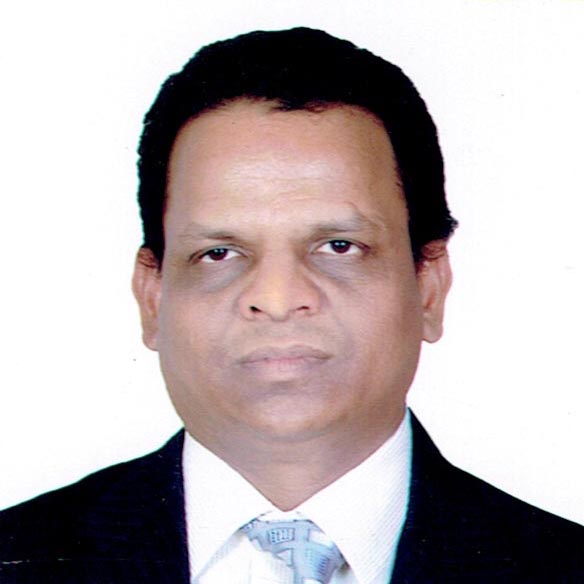Columns
Trafficking in persons
Nepal must focus on prevention efforts and victims' protection..jpg&w=900&height=601)
Dev Datta Joshi
Trafficking in persons is a global crime acknowledged by several international organisations such as the United Nations, International Organisation for Migration and International Labor Organisation. Across the world, governments and civil society organisations lack support systems and are not taking responsibility for the abuses and exploitations that trafficking victims face.
Most people in the world have little information and knowledge about human trafficking. Many are unaware of the existing laws in the country of origin, transiting country and country of destination. Furthermore, despite having the legal framework, such as international accords, the effectiveness of these strategies and mechanisms is often being questioned. Most cases of exploitation take place in the labour market, primarily in plantations and factories. The types of exploitation are lengthy working hours, under-remuneration, confiscation of travel documents, rest deprivation and sexual or physical abuse. Often, these individuals are either trapped in debt bondage or the forced labour market.
The United Nations Office on Drugs and Crime 2019 report has identified trafficking in persons as a grave violation of human rights. Nevertheless, the market for human trafficking is expanding because of the high demand for workers in an exploitative environment. Increasing numbers among vulnerable groups resulting from illegal migration or displacement owing to war and poverty provide opportunity and space for exploitation. Trafficking victims are forced to perform tasks in an involuntary situation. Fear of retaliation against them and their families by their master has been a contributing factor for not coming forward to get justice. There is also a fear of being perceived as criminals or undocumented immigrants.
In 2000, the United Nations General Assembly adopted the Protocol to Prevent, Suppress, and Punish Trafficking in Persons, Especially Women and Children, supplementing the United Nations Convention against Transnational Organised Crime (also known as the Palermo Protocol). The Palermo Protocol has been adopted by 128 countries worldwide and outlines an international anti-trafficking policy response. It declares that 'effective action to prevent and combat trafficking in persons, especially women and children, requires a comprehensive international approach in the countries of origin, transit and destination'.
In many jurisdictions, human trafficking is defined differently to meet local cultures and laws. However, on the international stage, a universal definition has been adopted. This is clearly expressed in the 2000 Palermo Protocol. It provides a definition of trafficking in persons that sets an international guideline and, most importantly, outlines actions that countries should take for the protection of victims of trafficking in persons.
As a Hubert H Humphrey Fellow, I had the privilege to gain insights while undertaking classes in International Trafficking in Persons, Human Rights and Terrorism, and International Organisation in the US. The US has treated crimes in relation to human trafficking with great concern. Efforts have been continuously carried out by legislative bodies, law enforcement agencies and civil society since the enactment of the Victims of Trafficking and Violence Protection Act.
The Department of Justice, Health and Human Services, and Department of Labour have numerous programmes to support trafficking survivors. They include providing temporary housing, job training, legal assistance, health support, and counselling. Observations and meetings with various groups of respondents reveal that US efforts against trafficking in persons focus much on protection and prosecution.
The constitution of Nepal is the fundamental law of the land for protecting human trafficking victims. The Human Trafficking and Transportation (Control) Act 2007 (amended in 2016) deals with the punishment of perpetrators of trafficking and protection of the human rights of victims. This law needs to be reviewed to cover pornography, forced labour, slavery, slavery-like practices and servitude in the definition of trafficking.
Nepal has no specific laws that criminalise the creation of paedophile sites, downloading and uploading of child abuse materials and online child sex abuse. Nepal must prove that appropriate strategies are in place for enhancing its efforts, particularly concerning combating human trafficking, prosecuting offenders, and protecting human trafficking victims. Nepal must rethink its present strategy by placing the victims' protection and prevention efforts at the focal point, and increasing prosecution efforts.
Cases of government officers being implicated in trafficking and smuggling of migrants should be treated as a most pressing matter; if found guilty, they should be given the maximum sentence possible. This will increase transparency and send a strong message of Nepal's global position against human trafficking and the smuggling of migrants.
***
What do you think?
Dear reader, we’d like to hear from you. We regularly publish letters to the editor on contemporary issues or direct responses to something the Post has recently published. Please send your letters to [email protected] with "Letter to the Editor" in the subject line. Please include your name, location, and a contact address so one of our editors can reach out to you.




 8.12°C Kathmandu
8.12°C Kathmandu















